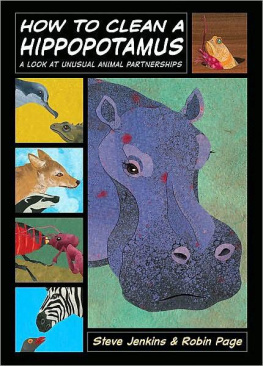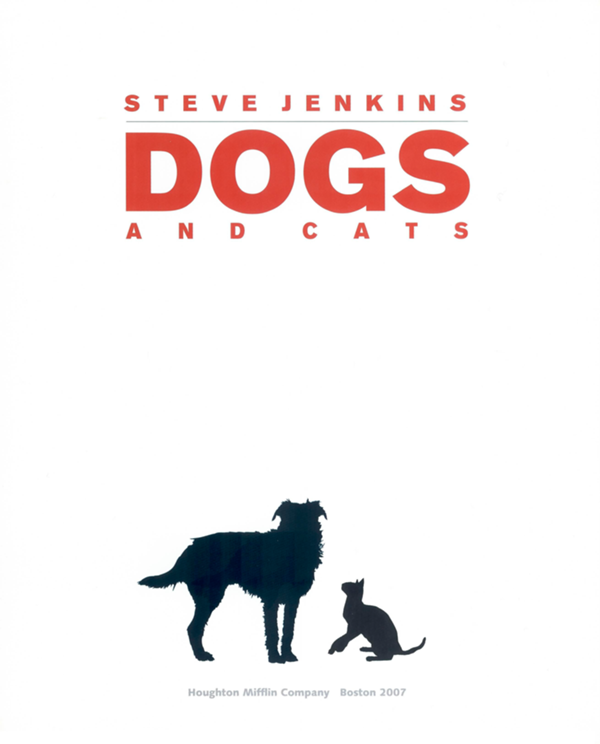
STEVE JENKINS
DOGS AND CATS
Houghton Mifflin Company Boston 2007
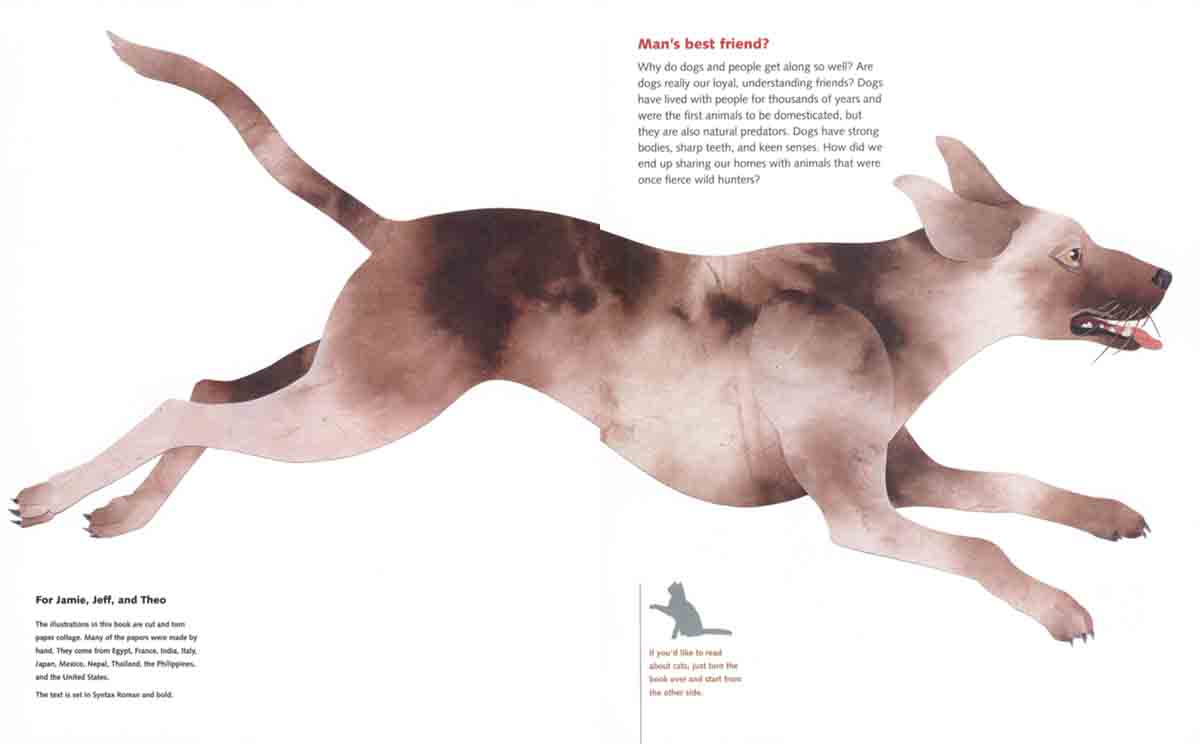
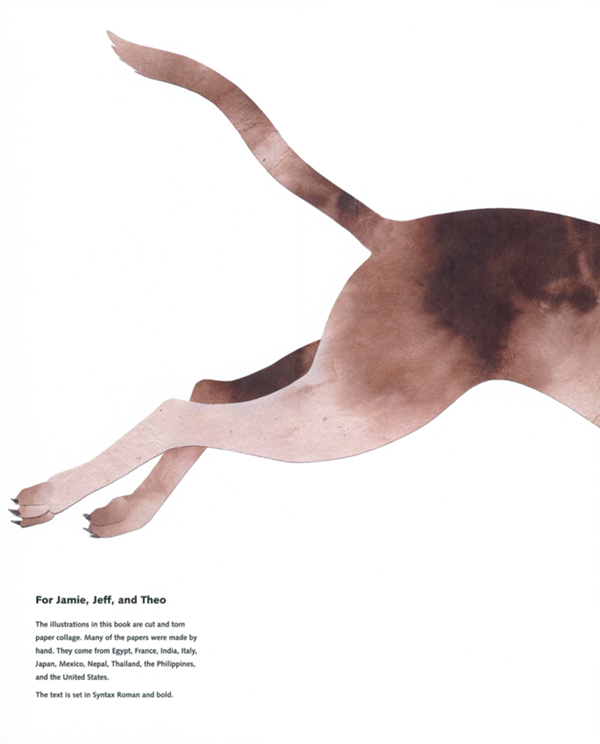
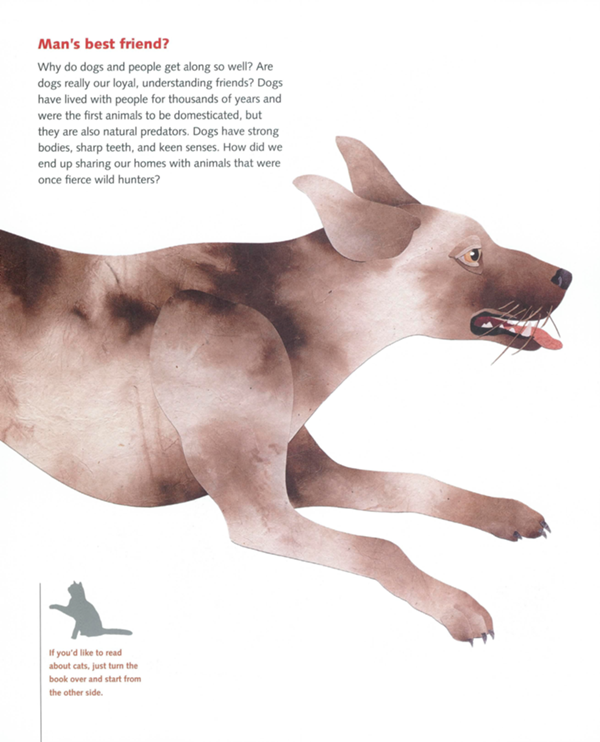
For Jamie, Jeff, and Theo
The illustrations in this book are cut and torn paper collage. Many of the papers were made by hand. They come from Egypt, France, India, Italy, Japan, Mexico, Nepal, Thailand, the Philippines, and the United States.
The text is set in Syntax Roman and bold.
Man's best friend?
Why do dogs and people get along so well? Are dogs really our loyal, understanding friends? Dogs have lived with people for thousands of years and were the first animals to be domesticated, but they are also natural predators. Dogs have strong bodies, sharp teeth, and keen senses. How did we end up sharing our homes with animals that were once fierce wild hunters?
If you'd like to read about cats, just turn the book over and start from the other side.
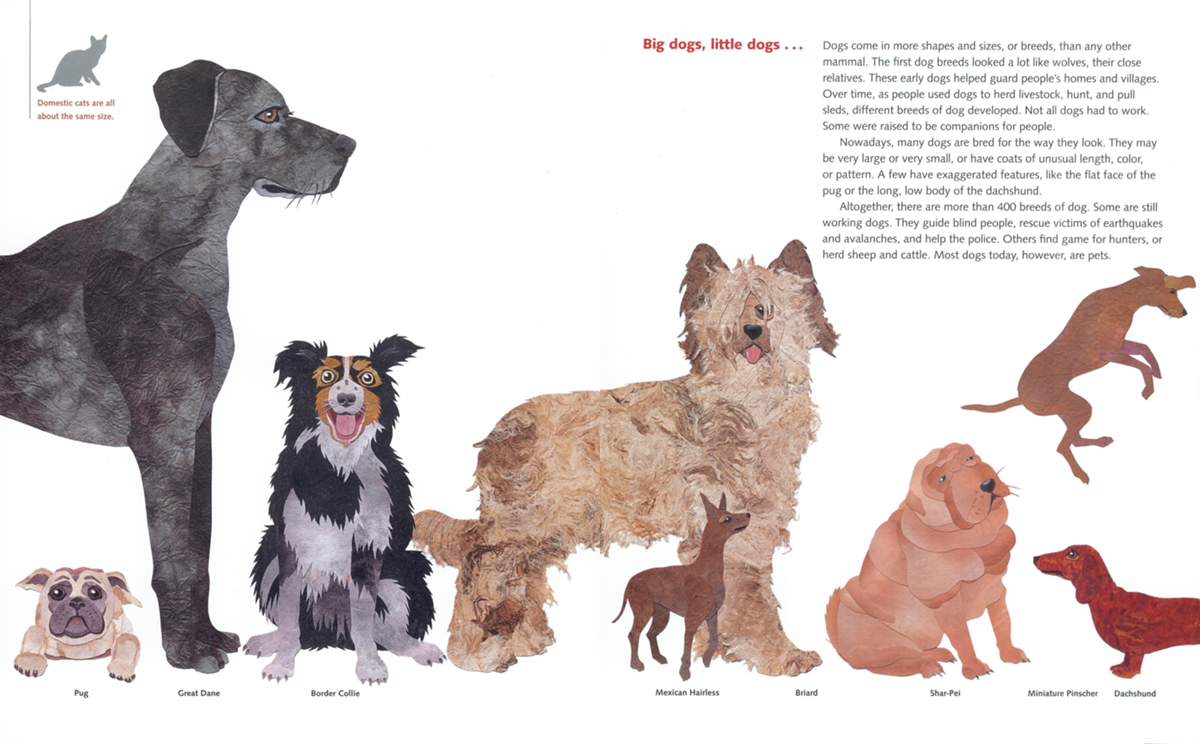
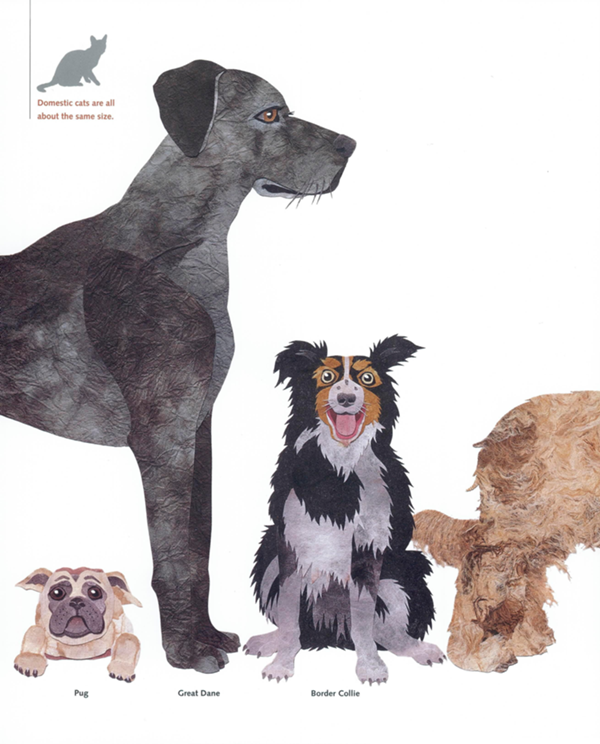
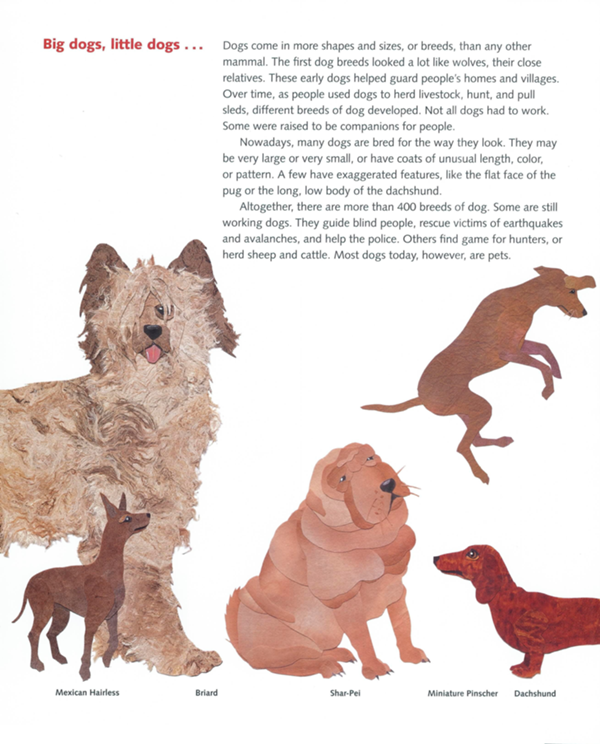
Domestic cats are all about the same size.
Big dogs, little dogs
Dogs come in more shapes and sizes, or breeds, than any other mammal. The first dog breeds looked a lot like wolves, their close relatives. These early dogs helped guard people's homes and villages. Overtime, as people used dogs to herd livestock, hunt, and pull sleds, different breeds of dog developed. Not all dogs had to work. Some were raised to be companions for people.
Nowadays, many dogs are bred for the way they look. They may be very large or very small, or have coats of unusual length, color, or pattern. A few have exaggerated features, like the flat face of the pug or the long, low body of the dachshund.
Altogether, there are more than 400 breeds of dog. Some are still working dogs. They guide blind people, rescue victims of earthquakes and avalanches, and help the police. Others find game for hunters, or herd sheep and cattle. Most dogs today, however, are pets.
Pug
Great Dane
Border Collie
Mexican Hairless
Briard
Shar-Pei
Miniature Pinscher
Dachshund
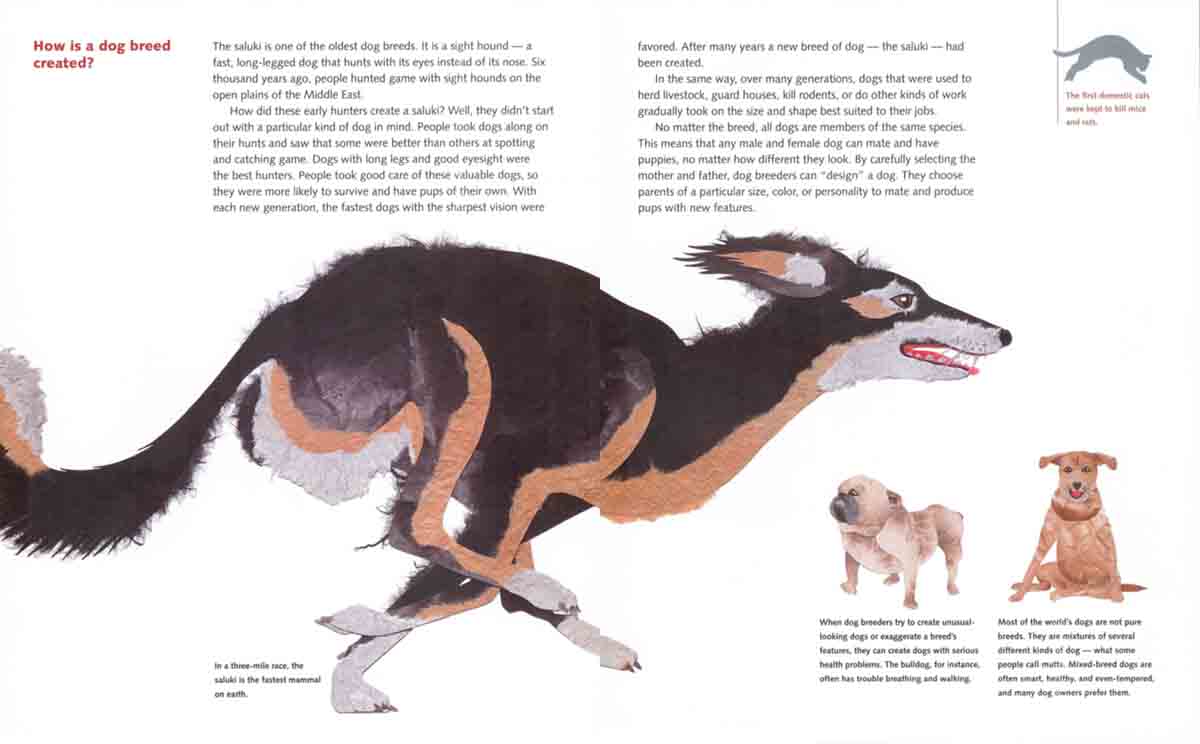
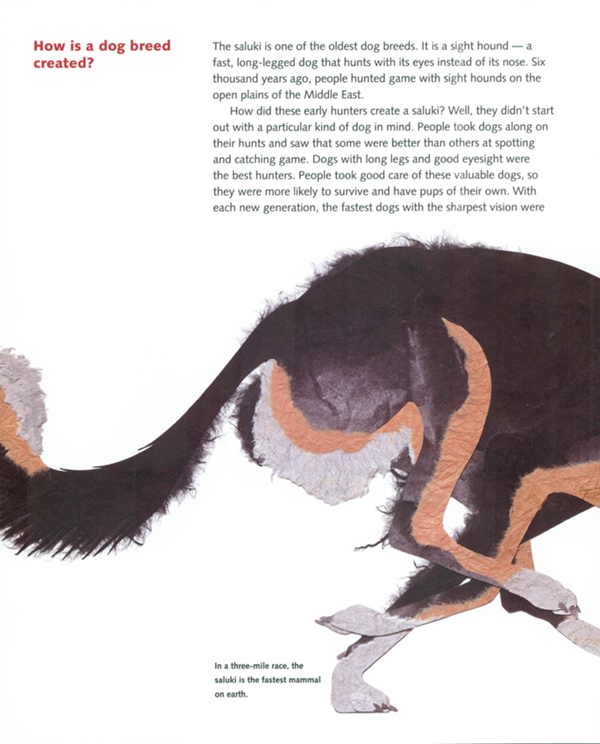
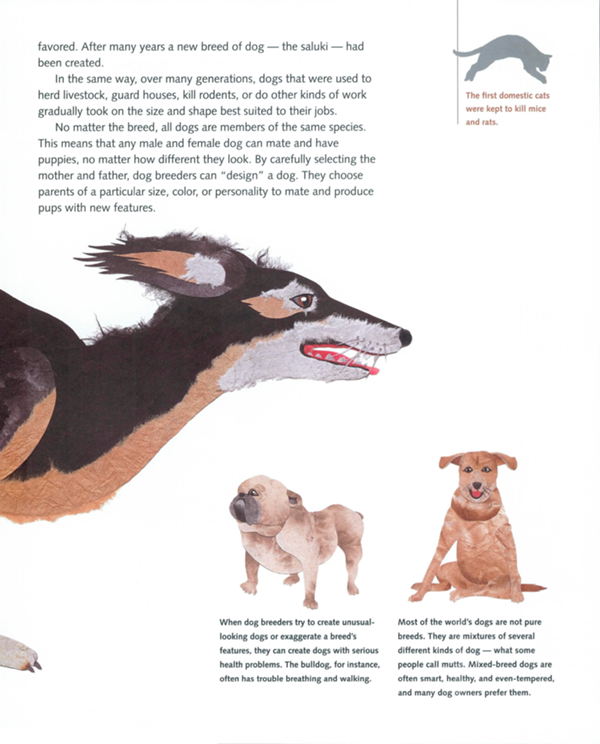
How is a dog breed created?
The saluki is one of the oldest dog breeds. It is a sight hounda fast, long-legged dog that hunts with its eyes instead of its nose. Six thousand years ago, people hunted game with sight hounds on the open plains of the Middle East.
How did these early hunters create a saluki? Well, they didn't start out with a particular kind of dog in mind. People took dogs along on their hunts and saw that some were better than others at spotting and catching game. Dogs with long legs and good eyesight were the best hunters. People took good care of these valuable dogs, so they were more likely to survive and have pups of their own. With each new generation, the fastest dogs with the sharpest vision were favored. After many years a new breed of dogthe salukihad been created.
In the same way, over many generations, dogs that were used to herd livestock, guard houses, kill rodents, or do other kinds of work gradually took on the size and shape best suited to their jobs.
No matter the breed, all dogs are members of the same species. This means that any male and female dog can mate and have puppies, no matter how different they look. By carefully selecting the mother and father, dog breeders can "design" a dog. They choose parents of a particular size, color, or personality to mate and produce pups with new features.
The first domestic cats were kept to kill mice and rats.
In a three-mile race, the saluki is the fastest mammal on earth.
When dog breeders try to create unusual-looking dogs or exaggerate a breed's features, they can create dogs with serious health problems. The bulldog, for instance, often has trouble breathing and walking.
Most of the world's dogs are not pure breeds. They are mixtures of several different kinds of dogwhat some people call mutts. Mixed-breed dogs are often smart, healthy, and even-tempered, and many dog owners prefer them.
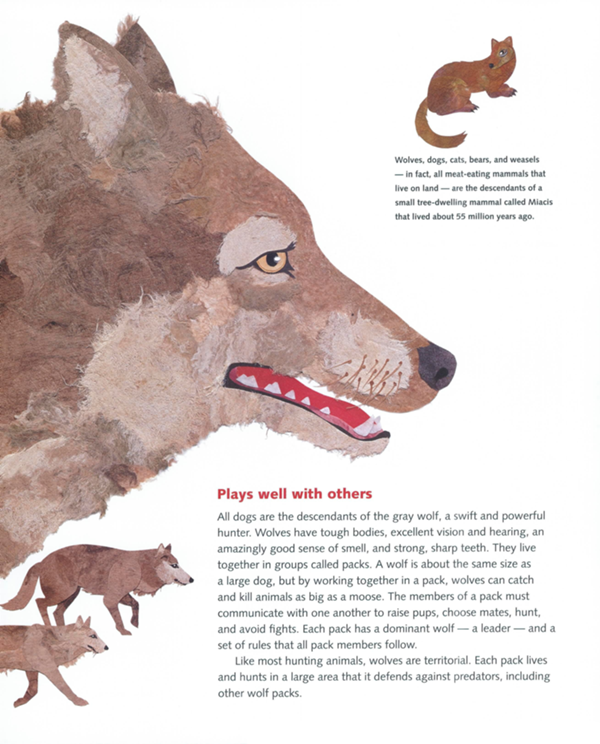
Wolves, dogs, cats, bears, and weaselsin fact, all meat-eating mammals that live on landare the descendants of a small tree-dwelling mammal called Miacis that lived about 55 million years ago.
Plays well with others
All dogs are the descendants of the gray wolf, a swift and powerful hunter. Wolves have tough bodies, excellent vision and hearing, an amazingly good sense of smell, and strong, sharp teeth. They live together in groups called packs. A wolf is about the same size as a large dog, but by working together in a pack, wolves can catch and kill animals as big as a moose. The members of a pack must communicate with one another to raise pups, choose mates, hunt, and avoid fights. Each pack has a dominant wolfa leaderand a set of rules that all pack members follow.
Like most hunting animals, wolves are territorial. Each pack lives and hunts in a large area that it defends against predators, including other wolf packs.

Where did the first dogs come from?
Dogs have been living with people for at least 14,000 years, and perhaps much longer. The first modern humanspeople like uslived in Africa more than 100,000 years ago. Wolves were probably attracted to the animal scraps and leftovers that these people threw out. Some wolves weren't afraid to live near people, and they found that it was easier to eat scraps than to hunt and kill their own prey. The humans' camp became the territory of these wolves, and they helped defend it from other wild animals. People realized that having wolves around was a good thing. For thousands of years, the wolves remained wild animals, living on the outskirts of human settlements. At some point, however, people probably took wolf pups from their dens and raised them. Wolves that were too aggressive were killed or driven off, so the tamer wolves were most likely to survive and have pups of their own. After thousands of generations, these animals were no longer wild wolvesthey had become dogs.
Next page

